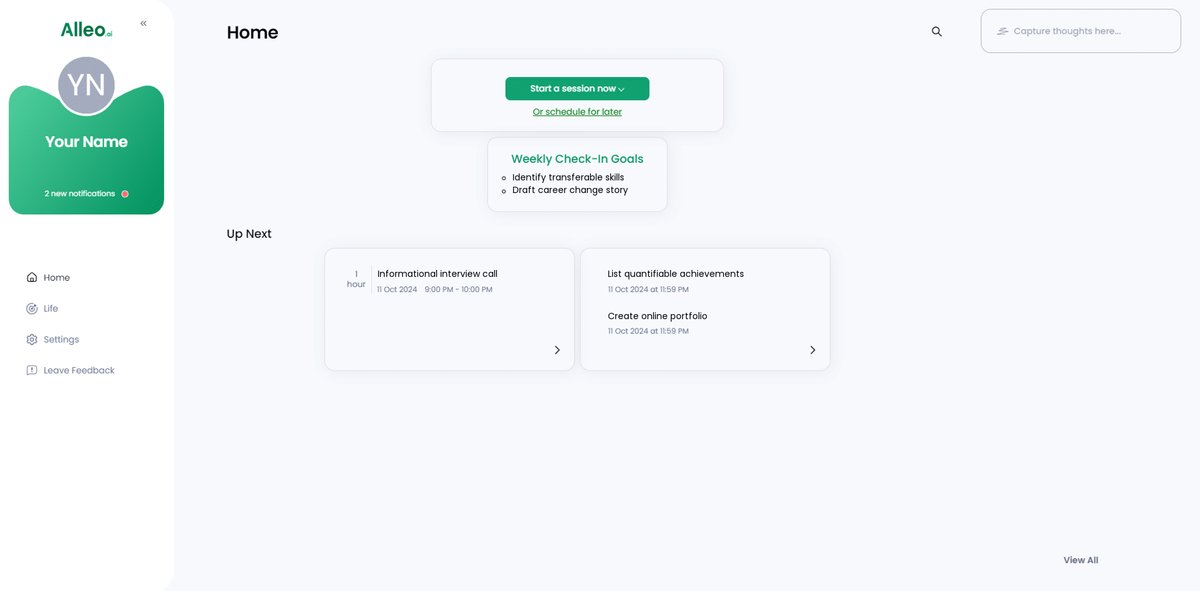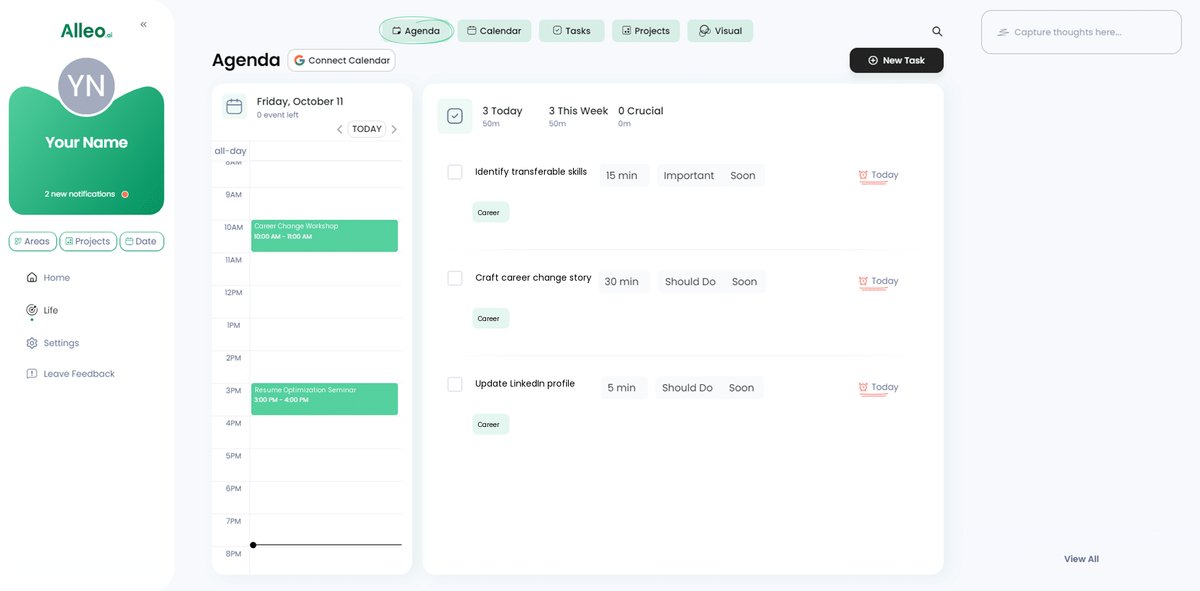Career Changer’s Guide: Make Your Job Application Stand Out and Land Your Dream Role
Are you overwhelmed by the thought of making your career change job application stand out in a crowded field of experienced professionals?
As a life coach, I’ve helped many professionals navigate these challenges. In my experience, standing out in a competitive job market requires more than just a standard resume. Effective career transition strategies are essential for success.
In this article, you’ll discover actionable career change job application tips to highlight your transferable skills, craft a compelling career change narrative, and leverage AI tools for optimization. We’ll cover everything you need to get noticed by hiring managers, including resume tips for career changers and industry-specific application techniques.
Let’s dive in.

Understanding the Challenge of Standing Out as a Career Changer
Switching careers often feels like navigating uncharted waters. Many clients initially struggle with the lack of direct experience in their new field, making it tough to stand out. Career change job application tips are essential for overcoming these challenges.
The competition is fierce, and employers often prioritize candidates with industry-specific backgrounds. This makes industry-specific application techniques crucial for success.
It’s also common to feel overwhelmed by the standard resume format, which may not effectively highlight your diverse skill set. A tailored approach is essential. Resume tips for career changers can help address this issue.
You need to move beyond the basics to truly get noticed. Personal branding for career change can make a significant difference.
In my experience, customizing your job application to showcase transferable skills can make a significant difference. It’s not just about listing qualifications—it’s about telling your unique story and demonstrating your potential value to employers. Highlighting unique skills for job applications is key.
By acknowledging these challenges and taking strategic steps, you can transform your job application into a powerful tool for career transition. Effective career transition strategies and professional development for job transitions are vital for success in your new field.

Strategic Steps to Make Your Job Application Stand Out
Overcoming this challenge requires a few key career change job application tips. Here are the main areas to focus on to make progress in your career transition:
- Tailor Resume with Transferable Skills: Identify and highlight transferable skills that align with the job description for career changers.
- Craft Compelling Career Change Narrative: Write a summary statement that explains your career shift and new goals, emphasizing your unique skills for job applications.
- Create Targeted Portfolio of Relevant Projects: Include case studies from past roles that demonstrate your industry-specific application techniques.
- Leverage Networking for Informational Interviews: Reach out to professionals in your desired field to enhance your networking strategies for new fields.
- Use AI Tools to Optimize Application Materials: Utilize AI tools to refine and track your application materials, supporting your personal branding for career change.
- Highlight Quantifiable Achievements in Cover Letter: Use specific metrics to demonstrate your impact in previous roles, applying cover letter writing techniques for career shifts.
Let’s dive in to these career change job application tips!
1: Tailor resume with transferable skills
Tailoring your resume with transferable skills is crucial for career changers to stand out, making it a key career change job application tip.
Actionable Steps:
- Identify your core transferable skills that match the job description.
- Example: “Highlight your project management skills, such as leadership and time management, as part of your career transition strategies.”
- Use strong action verbs and quantifiable achievements to describe these skills.
- Example: “Managed a team of 10, achieving a 20% increase in project efficiency, showcasing unique skills for job applications.”
- Customize your resume format to emphasize these skills.
- Example: “Adopt a combination resume format to balance your skills and experience, following resume tips for career changers.”
Explanation:
These steps matter because they help you demonstrate how your existing skills can be valuable in your new career. By quantifying achievements and using strong action verbs, you make your resume more compelling, effectively transferable skills highlighting.
According to Resume Professional Writers, a combination resume format effectively showcases both skills and experience, making it ideal for career changers. Tailoring your resume this way increases your chances of catching the hiring manager’s eye and is an essential career change job application tip.
Key benefits of tailoring your resume:
- Aligns your experience with job requirements
- Showcases your most relevant skills
- Increases chances of passing ATS systems
These strategic steps will help you highlight your transferable skills effectively, setting the stage for a successful career change and improving your industry-specific application techniques.

2: Craft compelling career change narrative
A compelling career change narrative is crucial for making your career change job application tips stand out and engaging hiring managers.
Actionable Steps:
- Write a summary statement that explains your career transition strategies and new career goals.
- Example: “Detail your passion for marketing and how your background in sales provides unique skills for job applications.”
- Develop 5-7 success stories that showcase your transferable skills and experiences.
- Example: “Describe a time when you successfully led a cross-functional team to achieve a significant goal, highlighting transferable skills.”
- Use storytelling techniques to make your narrative engaging and relatable.
- Example: “Start with a challenge you faced, describe the actions you took, and end with the positive outcome, demonstrating your personal branding for career change.”
Explanation:
These steps matter because they help you create a strong and relatable story, making your career change job application tips memorable. By explaining your career transition and using specific examples, you can highlight your unique value.
According to Resume Professional Writers, a well-crafted narrative can significantly enhance your resume. Crafting a compelling narrative helps you connect with hiring managers on a personal level, which is essential for interview preparation for career switchers.
This approach will help you build a bridge between your past experiences and your new career path, effectively showcasing your transferable skills highlighting.

3: Create targeted portfolio of relevant projects
Creating a targeted portfolio of relevant projects is essential for career changers to showcase their skills and experiences, making it a crucial part of career change job application tips.
Actionable Steps:
- Build an online portfolio with case studies from past roles, highlighting transferable skills for job applications.
- Example: “Showcase a marketing campaign you led, detailing the strategy, implementation, and results.”
- Regularly update your portfolio with new projects and achievements, demonstrating your professional development for job transitions.
- Example: “Add any freelance work or volunteer projects that are relevant to your new career.”
Explanation:
These steps matter because a well-crafted portfolio demonstrates your practical skills and achievements, making you more attractive to employers. By updating your portfolio regularly, you can show continuous growth and relevance, which is crucial for career transition strategies.
According to General Assembly, employers in UX design highly value portfolios that highlight quantifiable results and user satisfaction metrics.
Elements of an effective portfolio for career change job applications:
- Clear project descriptions
- Visual representations of your work
- Measurable outcomes and impact
Your portfolio can be a powerful tool to bridge the gap between your past experiences and your new career path, serving as a key component in your personal branding for career change.

4: Leverage networking for informational interviews
Leveraging networking for informational interviews is key to standing out and gaining valuable industry insights when pursuing career change job application tips.
Actionable Steps:
- Reach out to professionals in your target field for informational interviews.
- Example: “Connect with industry experts on LinkedIn and request a short chat to learn about their experiences and networking strategies for new fields.”
- Attend industry events and workshops to grow your network.
- Example: “Participate in webinars and conferences relevant to your desired career to meet potential mentors and explore industry-specific application techniques.”
- Follow up with your new contacts to maintain and strengthen relationships.
- Example: “Send thank-you notes and keep your connections updated on your job search progress and personal branding for career change efforts.”
Explanation:
These steps matter because networking can open doors to opportunities and provide invaluable advice. Informational interviews give you a chance to learn about industry trends and job openings, enhancing your career transition strategies.
According to Coursera, many job seekers find success through networking and building relationships. Engaging with professionals helps you make a lasting impression and stay top of mind for future opportunities, which is crucial for career changers highlighting transferable skills.
Building a strong network can significantly enhance your job search and career transition efforts, providing unique skills for job applications and interview preparation for career switchers.
5: Use AI tools to optimize application materials
Using AI tools to optimize your application materials is essential for standing out in today’s job market, especially when implementing career change job application tips.
Actionable Steps:
- Utilize AI tools to refine your resume and cover letters. AI can suggest improvements and ensure your materials are error-free, which is crucial for resume tips for career changers.
- Leverage AI for job matching and application tracking. Use AI to identify job opportunities that match your skills and track your applications, aiding in your career transition strategies.
- Implement AI-driven mock interviews to prepare for job interviews. Practice common interview questions and get feedback on your responses, enhancing your interview preparation for career switchers.
Explanation:
These steps matter because they help you craft polished and targeted application materials. By leveraging AI, you can refine your resume, identify suitable job opportunities, and better prepare for interviews, all crucial aspects of career change job application tips.
According to Coursera, using AI tools can significantly enhance your application process, making it more efficient and effective.
Benefits of AI in job applications:
- Improved accuracy and professionalism
- Time-saving and efficiency
- Personalized job recommendations
Integrating AI tools into your job search strategy can give you a competitive edge and increase your chances of success, particularly when highlighting transferable skills and implementing industry-specific application techniques.

6: Highlight quantifiable achievements in cover letter
Including quantifiable achievements in your cover letter is crucial for demonstrating your impact and standing out to hiring managers, especially when applying for a career change job.
Actionable Steps:
- Use specific metrics to demonstrate your impact in previous roles. For example, “Increased social media engagement by 30% through targeted campaigns,” showcasing transferable skills for your career transition.
- Align your achievements with the job requirements. For instance, “If the job requires data analysis skills, highlight your experience with data-driven decision-making,” emphasizing unique skills for job applications.
- Keep your cover letter concise and focused on key achievements. Limit your cover letter to one page, emphasizing your top 3-4 achievements, which is crucial for effective cover letter writing for career shifts.
Explanation:
These career change job application tips matter because they help you clearly illustrate the value you bring to potential employers.
By providing specific metrics, you make your achievements tangible and relatable, which is essential for resume tips for career changers.
According to University of Nebraska-Lincoln’s Career Guide, hiring managers are more likely to be impressed by quantifiable results.
Highlighting your most relevant achievements makes your cover letter compelling and effective, supporting your personal branding for career change.
By focusing on these steps, you can make your cover letter a powerful tool to showcase your strengths and readiness for the role, enhancing your career transition strategies.

Partner with Alleo to Make Your Job Application Stand Out
We’ve explored the challenges of standing out as a career changer. Now, let’s make this journey easier and faster with Alleo, your partner for career change job application tips.
Setting up with Alleo is simple. Create an account, and you’ll get a personalized coaching plan to support your career transition strategies.
Alleo’s AI coach will help identify your transferable skills and craft a tailored resume, essential for resume tips for career changers.
The coach provides full sessions just like a human coach, with follow-ups to track progress and handle changes, offering industry-specific application techniques.
You’ll receive text and push notifications to keep you accountable in your professional development for job transitions.
Ready to get started for free? Let me show you how to enhance your career change job application!
Step 1: Log in or Create Your Account
To begin your career transition journey with Alleo’s AI coach, simply Log in to your account or create a new one to access personalized guidance for crafting standout job applications.

Step 2: Choose Your Career Change Focus
Select “Setting and achieving personal or professional goals” to align your efforts with your career transition aspirations, helping you tailor your job application materials and stand out to potential employers.

Step 3: Select “Career” as Your Focus Area
Choose “Career” as your life area focus to align Alleo’s AI coach with your goal of making your job application stand out, enabling personalized guidance on resume tailoring, skill highlighting, and career change strategies.

Step 4: Starting a coaching session
Begin your journey with an intake session, where you’ll work with your AI coach to set up a personalized plan for optimizing your job application materials and career transition strategy.

Step 5: Viewing and managing goals after the session
After your coaching session, check the app’s home page to see the goals you discussed, allowing you to easily track and manage your progress in making your job application stand out.

Step 6: Adding events to your calendar or app
Use the calendar and task features in Alleo to add important job search events and deadlines, allowing you to track your progress and stay accountable as you work on making your job application stand out.

Empower Your Career Transition with These Steps
Transitioning careers is a daunting task, but you’re not alone. Career change job application tips can help guide you through this process.
By focusing on these strategies, you can make your job application stand out. Tailoring your resume, crafting a compelling narrative, creating a targeted portfolio, leveraging networking strategies for new fields, using AI tools, and highlighting transferable skills will all help in your career transition.
Remember, every step you take brings you closer to your new career. Unique skills for job applications can set you apart in your chosen industry.
If you ever feel overwhelmed, Alleo is here to help with your career change job application.
With Alleo, you’ll get personalized coaching to refine your application materials, including resume tips for career changers and cover letter writing for career shifts.
So, take the first step today in your professional development for job transitions. You’ve got this!